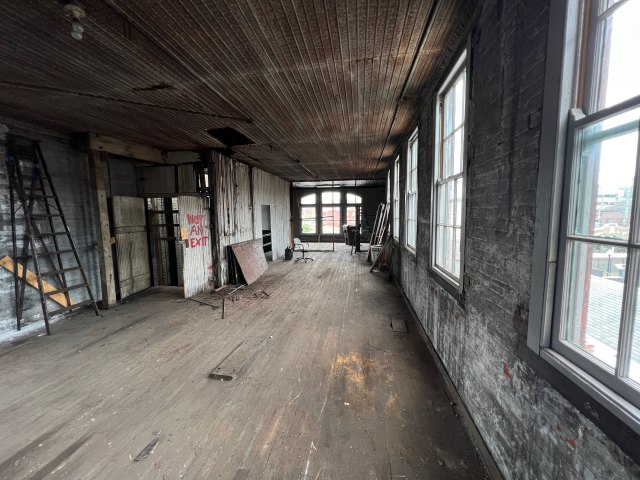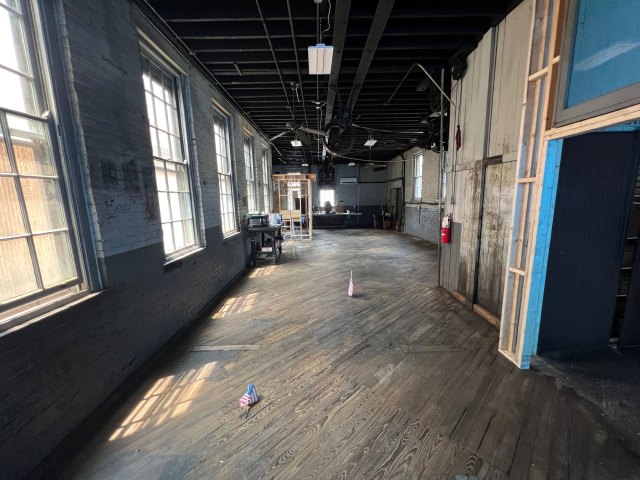
Last week an amazing thing happened a block away from the Anthe Building (the site of our new headquarters). Workers began removing the ugly brick cladding from a building at the corner of Fourth Street and Scott Boulevard. What was below the brick was a link to our family’s past.
Lucy’s family ran the chain of Grote Drugstores in Northern Kentucky and Cincinnati in the 20th century. They had two stores in Covington. One was at the corner of Pike Street and Madison Ave., what is now The Hannaford, a trendy bar.
The other store was at Fourth Street and Scott Boulevard. But Jane May nee Grote (Lucy’s mom) couldn’t remember exactly which corner it was on – the area has changed a lot.

On Sunday, Lucy and I visited the construction site at Fourth and Scott. The work had revealed a gorgeous storefront that still had some intact glass. Two windows said “Prescriptions” and one said “Hy-Pure Drugs,” an old brand.
I showed Jane the photos and she confirmed that yup, that was the drugstore her father owned and ran. Jane said she worked the lunch counter there when she was 15 or 16 and would fill in for the employees who were on vacation. The lunch counter was inexpensive, close to the courthouse and a quick place to get a bite.
It also is one block from the Anthe Building. We are thrilled that the drugstore storefront is coming back to life and can’t wait to see what it will be in its next life.
— Christopher Schwarz












